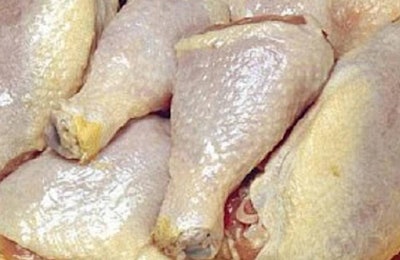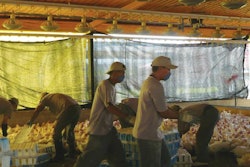
The U.S. Department of Agriculture's (USDA) Food Safety and Inspection Service (FSIS) will begin applying new, tougher performance standards for Salmonella and Campylobacter for comminuted poultry products and chicken parts on July 1. However, regulatory verification and sampling requirements and punitive measures for not meeting the standards are causing as much industry consternation as the performance standards themselves.
Known officially as the “Modernization of Poultry Slaughter Inspection” (81 FR 7285), the regulations led a tortuous path from rulemaking and publication in the Federal Register in 2014, and subsequent revisions and related FSIS notices to their present form. Originally intended to present a regulatory "carrot and stick" to poultry processors, the rules promulgated in 2014 included the possibility of faster line speeds (the carrot) and tighter limits on pathogens (the stick). During the comment period, at the behest of the inspectors’ union and activist groups, the regulatory carrot was removed (there would be no faster line speeds) and some performance aspects were tightened (the stick got bigger).
A notable change to the proposal is that performance data from a three-month moving average window is to be used for calculating a plant’s performance category classification (reflecting level of compliance with performance standards) rather than a six-month moving window.
New standards vs. chicken industry performance
The new regulatory performance standard for chicken parts versus current industry performance illustrates the challenge that poultry processors face. FSIS sampling shows Salmonella prevalence in chicken parts (breasts, wings and legs) has dropped from 27 percent to 21 percent. That’s progress, but the new performance standard for chicken parts is 15.4 percent.
The challenge for chicken parts processors in Campylobacter is even greater. FSIS sampling shows the prevalence of Campylobacter in chicken parts remains unchanged at around 15 percent. The new performance standard for Campylobacter is 7.7 percent.
Legacy year for the Obama administration
The National Chicken Council’s Dr. Ashley Peterson, speaking at the U.S. Poultry & Egg Association’s Poultry Processor Workshop, outlined the final rule’s provisions, and said, “This is a legacy year [for the Obama administration], which means ‘hold on,’ because if you have thought it was bad up until now, just wait because this administration has seven more months and it could get worse.”
Focus on comminuted poultry meat
Peterson said FSIS remains focused on the food safety of mechanically separated chicken/turkey and may implement a pathogen performance reduction standard, particularly if there is evidence of the following:
- The comminuted poultry meat is used in a domestic not-ready-to-eat product
- Percent positive incidence of Salmonella and/or Campylobacter is unchanged or there is an upward trend over the next year
- Steps are not taken by the poultry industry to reduce contamination on source materials over the next year
FSIS to publish category performance in 2016
Establishments producing poultry carcasses will have their performance category status published on the FSIS website beginning in June 2016. The category status will be determined based on results from May 2015 to present.
FSIS will begin publishing the performance category of poultry establishments producing parts and/or comminuted meat after the completion of the 52 weeks of sampling. The agency may begin publication sooner if there is evidence of poor process control (reflected by an increase in positives) by industry poultry plants.
The agency will begin publishing aggregate data in August 2016 related to the poultry industry’s achievement of performance standards.
What happens when performance standards aren’t met?
Failure to meet performance standards will result in the following agency action:
- Public Health Risk Evaluation (PHRE) scheduled
- Food Safety Audit (FSA) may result
Certain foodborne pathogen findings in plants may lead to closer scrutiny or enforcement action by FSIS. The agency will be looking for repetitive findings of foodborne pathogens of public health concern, antibiotic-resistant strains and strains associated with human disease outbreaks.
If these pathogens are found, FSIS will take the following action:
- Samples will be collected (16 daily or eight per shift follow-up samples) based on a poultry processing plant’s volume/HACCP size
- FSIS will notify the Centers for Disease Control (CDC) and public health partners (states) about the poultry establishment’s poor performance
- The agency may collect consignee list
Plants would have 90 days to effectively correct the food safety system or enforcement action may follow.
New food pathogen performance standards
FSIS will sample large-volume plants four to five times monthly. The new performance standards for Salmonella and Campylobacter as follows:
Comminuted chicken
- 25 percent for Salmonella (13 of 52 allowed)
- 1.9 percent for Campylobacter (1 of 52 allowed)
Comminuted turkey
- 13.5 percent for Salmonella (7 of 52 allowed)
- 1.9 percent for Campylobacter (1 of 52 allowed)
Chicken parts
- 15.4 percent for Salmonella (8 of 52 allowed)
- 7.7 percent for Campylobacter (4 of 52 allowed)


















